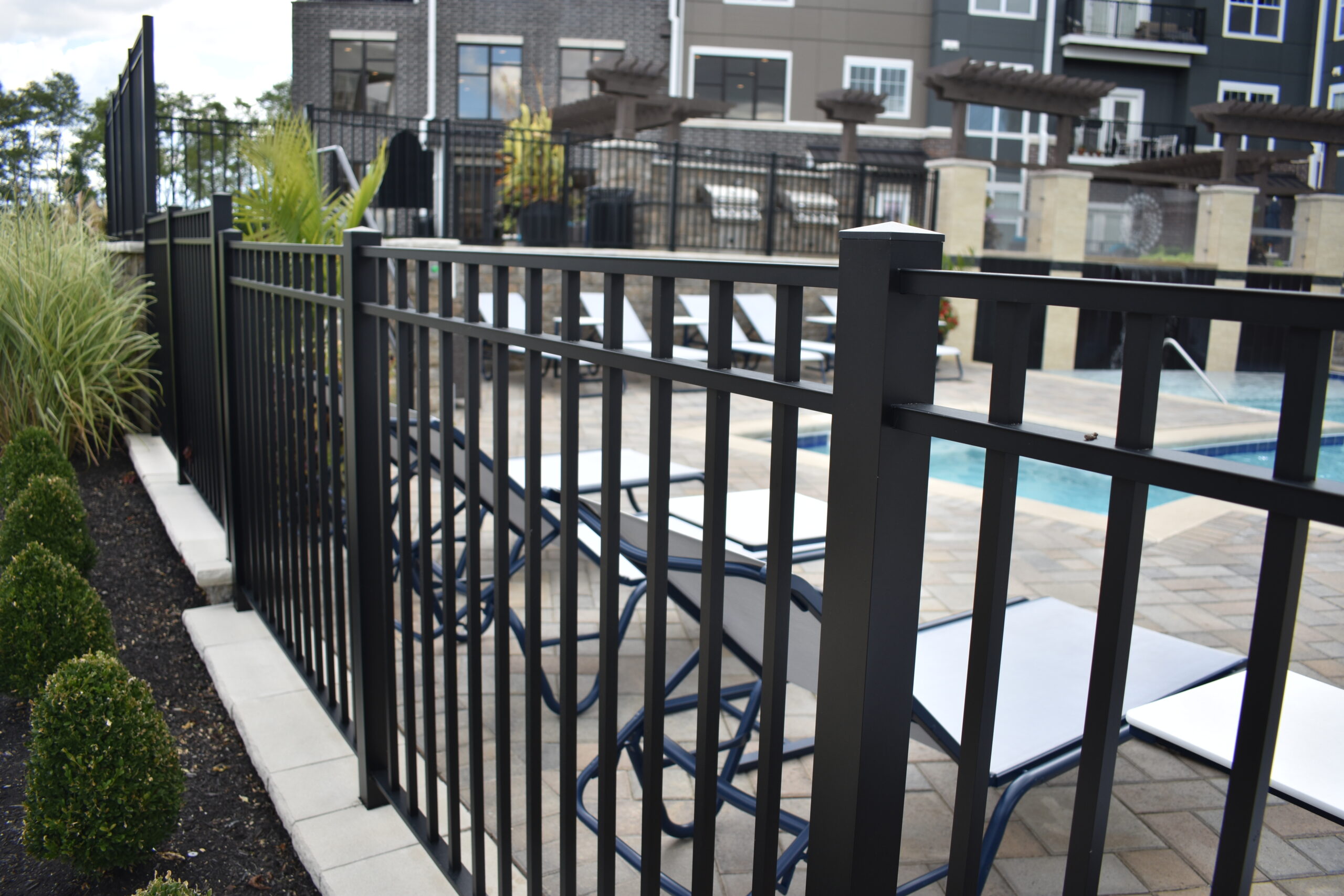Many people will freely alternate between the terms “fence” and “railing”. While not technically correct, it is often not terribly important. However, when it comes to constructing or selling one item or the other, it is critical to ensure the proper item is ordered. Ordering fence when desiring railing or vice-versa can lead to receiving a finished product that does not match the needs or expectations of the individual green-lighting the work.
SO, WHAT IS RAILING?
The simple, ten-cent definition of a railing is a barrier providing fall protection or separating two locations. While the intended use of the product does ultimately play a big role in naming conventions, most manufacturers will go a bit deeper when defining the product.
From a technical standpoint, railing will always have a defined top rail and bottom rail at a minimum, and possibly a third (or further) horizontal line. Furthermore, railing can often be found with a wide variety of infill options, from pickets/balusters to cables to rod or pipe, all the way to custom infills such as glass, mesh, or grid. Infills within a railing family will always terminate at a bottom line and one of the top lines, never extending beyond the topmost horizontal line.
Typically, a railing system will stand between 36” and 42” from the ground to the top of the top rail, rarely extended higher than 42”. Railing is most commonly found on elevated surfaces such as decks or balconies, but is also used on ground level to denote separation between two areas such as a restaurant patio. Additionally, railing is used on stairs and ramps to assist in safe passage, something a fence will never be found doing. Finally, it is important to note that the structural integrity of a railing system is designed to bear weight if being leaned on.
A typical railing application would be something along the lines of a single-family or multi-family balcony or porch, hotel, educational facility, commercial building, municipality, or water treatment plant to name a few.
SO, WHAT IS FENCE?
Merriam Webster will tell you that a fence is an upright structure enclosing an area of ground to control access. As with railing, the intent of the product is important, but a manufacturer will look a little deeper.
Fence will always contain a minimum of two horizontal lines and often more. However, infills will frequently run past both the top and bottom horizontal lines. Oftentimes, pickets extending beyond the uppermost horizontal line will feature a spear or other finial-type feature. And pickets often extend below the bottom rail very close to the surface, for security reasons. For infill, fence will almost always feature pickets/balusters and not be compatible with items such as cable. Finally, fence can run on both level and uneven ground, but cannot be utilized on stairs/ramps and cannot by code used as a handrail.
Fence commonly is seen as a larger product compared to its railing counterpart, usually ranging 60”-72” in height. Additionally, fence is used at ground level primarily, with the intent of safeguarding an area either to keep animals or people in or out. For example, fence is used in backyard applications to provide an area for a pet to roam freely without worry of running off. Finally, fences often feature a welded hinged gate for entry and exit purposes.
Typical applications for fence usually include swimming pools, athletic venues, backyards, parking lots, public areas, and venues where security is a concern.
SO, WHAT IS THE DIFFERENCE?
In general, the application for the finished product is a key to determining whether railing or fence is what you require. However, key design elements can still dramatically alter a project. Specifically, the way infills interact with horizontal lines will make a significant difference in both aesthetics and functionality. These terms often can be used interchangeably, but when small details are important, care should be taken to use them correctly!
When being asked for the difference in fence and railing, the right answer is also the easy one. In an application where providing safety is the goal, railing is the solution. If creating a barrier is your objective, fence is your go-to.
Superior Aluminum Products, based in southwest Ohio, has over 60 years of experience in providing the industry’s best in both railing and fence. Learn more about railing and fence from their selection of informative pieces at www.superioraluminum.com. The website also contains information regarding the various types of railing and fence available from this industry leader.





